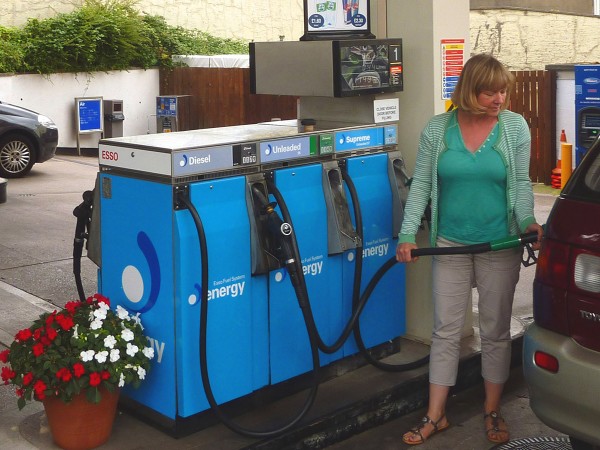 Facebook has announced that it’s purchasing the messaging company WhatsApp. It is paying $19 billion in cash and shares, a sum that dwarfs other acquisitions of start-up companies in the app market. But what are the reasons for the acquisition and how will it affect users?
Facebook has announced that it’s purchasing the messaging company WhatsApp. It is paying $19 billion in cash and shares, a sum that dwarfs other acquisitions of start-up companies in the app market. But what are the reasons for the acquisition and how will it affect users?
WhatsApp was founded less than five years ago and has seen massive growth and now has some 450 million active users, 70% of whom use it daily. This compares with Twitter’s 240 million users. An average of one million new users are signing up to WhatsApp each day. As the Wall Street Journal article, linked below, states:
Even by the get-big-fast standards of Silicon Valley, WhatsApp’s story is remarkable. The company, founded in 2009 by Ukrainian Jan Koum and American Brian Acton, reached 450 million users faster than any company in history, wrote Jim Goetz, a partner at investor Sequoia Capital.
Facebook had fewer than 150 million users after its fourth year, one third that of WhatsApp in the same time period.
Yet, despite its large user base, WhatsApp has just 55 employees, including 32 engineers.
For the user, WhatsApp offers a cheap service (free for the first year and just a 99¢ annual fee thereafter).  There are no charges for sending or receiving text, pictures and videos. It operates on all mobile systems and carries no ads. It also offers privacy – once sent, messages are deleted from the company’s servers and are thus not available to government and other agencies trying to track people.
There are no charges for sending or receiving text, pictures and videos. It operates on all mobile systems and carries no ads. It also offers privacy – once sent, messages are deleted from the company’s servers and are thus not available to government and other agencies trying to track people.
With 450 million current active users, this means that revenue next year will not be much in excess of $450 million. Thus it would seem that unless Facebook changes WhatsApp’s charging system or allows advertising (which it says it won’t) or sees massive further growth, there must have been reasons other than simple extra revenue for the acquisition.
Other possible reasons are investigated in the videos and articles below. One is to restrict competition which threatens Facebook’s own share of the messaging market: competition that has seen young people move away from Facebook, which they see is becoming more of a social media platform for families and all generations, not just for the young.
Videos and podcasts
 Facebook pays billions for WhatsApp Messenger smartphone service Deutsche Welle, Manuel Özcerkes (19/2/14)
Facebook pays billions for WhatsApp Messenger smartphone service Deutsche Welle, Manuel Özcerkes (19/2/14)
 Facebook’s WhatsApp buy no bargain Reuters, Peter Thal Larsen (20/2/14)
Facebook’s WhatsApp buy no bargain Reuters, Peter Thal Larsen (20/2/14)
 Facebook Agrees To Buy WhatsApp For $19bn Sky News, Greg Milam (20/2/14)
Facebook Agrees To Buy WhatsApp For $19bn Sky News, Greg Milam (20/2/14)
 Facebook Eliminates Competitor With WhatsApp Bloomberg TV, Om Malik, David Kirkpatrick and Paul Kedrosky (20/2/14)
Facebook Eliminates Competitor With WhatsApp Bloomberg TV, Om Malik, David Kirkpatrick and Paul Kedrosky (20/2/14)
 Why WhatsApp Makes Perfect Sense for Facebook Bloomberg TV, Om Malik, David Kirkpatrick and Paul Kedrosky (20/2/14)
Why WhatsApp Makes Perfect Sense for Facebook Bloomberg TV, Om Malik, David Kirkpatrick and Paul Kedrosky (20/2/14)
 Facebook buying WhatsApp for $19bn BBC News, Mike Butcher (20/2/14)
Facebook buying WhatsApp for $19bn BBC News, Mike Butcher (20/2/14)
 Is Facebook’s acquisition of WhatsApp a desperate move? CNBC News, Rob Enderle (19/2/14)
Is Facebook’s acquisition of WhatsApp a desperate move? CNBC News, Rob Enderle (19/2/14)
 Facebook’s $19bn WhatsApp deal ‘unjustifiable’ BBC Today Programme, Larry Magid (20/2/14)
Facebook’s $19bn WhatsApp deal ‘unjustifiable’ BBC Today Programme, Larry Magid (20/2/14)
Articles
Facebook to buy WhatsApp for $19 billion in deal shocker ReutersGerry Shih and Sarah McBride (20/2/14)
Facebook to Pay $19 Billion for WhatsApp Wall Street Journal, Reed Albergotti, Douglas MacMillan and Evelyn M. Rusli (19/2/14)
Facebook to buy WhatsApp for $19bn The Telegraph, Katherine Rushton (19/2/14)
Facebook buys WhatsApp: Mark Zuckerberg explains why The Telegraph (19/2/14)
WhatsApp deal: for Mark Zuckerberg $19bn is cheap to nullify the threat posed by messaging application The Telegraph, Katherine Rushton (20/2/14)
Why did Facebook buy WhatsApp? TechRadar, Matt Swider (20/2/14)
What is WhatsApp? What has Facebook got for $19bn? The Guardian, Alex Hern (20/2/14)
Facebook to buy messaging app WhatsApp for $19bn BBC News (20/2/14)
WhatsApp – is it worth it? BBC News, Rory Cellan-Jones (20/2/14)
Facebook buys WhatsApp: what the analysts say The Telegraph (19/2/14)
Facebook ‘dead and buried’ as teenagers switch to WhatsApp and Snapchat – because they don’t want mum and dad to see their embarrassing pictures Mail Online (27/12/13)
Facebook and WhatsApp: Getting the messages The Economist (22/2/14)
Questions
- Are Facebook and WhatsApp substitutes or complements, or neither?
- What does Facebook stand to gain from the acquisition of WhatsApp? Is the deal a largely defensive one for Facebook?
- Has Facebook paid too much for WhatsApp? What information would help you answer this question?
- Would it be a good idea for Facebook to build in the WhatsApp functionality into the main Facebook platform or would it be better to keep the two products separate by keeping WhatsApp as a self contained company?
- What effects will the acquisition have on competition in the social media and messaging market? Is this good for the user?
- Will the deal attract the attention of Federal competition regulators in the USA? If so, why; if not, why not?
- What are the implications for Google and Twitter?
- Find out and explain what happened to the Facebook share price after the acquisition was announced.
 Microsoft’s Office suite is the market leader in the multi-billion dollar office software market. Although an oligopoly, thanks to strong network economies Microsoft has a virtual monopoly in many parts of the market. Network economies occur when it saves money and/or time for people to use the same product (software, in this case), especially within an organisation, such as a company or a government.
Microsoft’s Office suite is the market leader in the multi-billion dollar office software market. Although an oligopoly, thanks to strong network economies Microsoft has a virtual monopoly in many parts of the market. Network economies occur when it saves money and/or time for people to use the same product (software, in this case), especially within an organisation, such as a company or a government.
Despite the rise of open-source software, such as Apache’s OpenOffice and Google Docs, Microsoft’s Office products, such as Word, Excel and PowerPoint, still dominate the market. But are things about to change?
The UK government has announced that it will seek to abandon reliance on Microsoft Office in the public sector. Provided there are common standards within and across departments, it will encourage departments to use a range of software products, using free or low-cost alternatives to Microsoft products where possible. This should save hundreds of millions of pounds.
Will other governments around the world and other organisations follow suit? There is a lot of money to be saved on software costs. But will switching to alternatives impose costs of its own and will these outweigh the costs saved?
UK government to abandon Microsoft “oligopoly” for open source software Digital Spy, Mayer Nissim (29/1/14)
No, the government isn’t dumping Office, but it does want to start seeing other people ZDNet, Nick Heath (29/1/14)
UK government once again threatens to ditch Microsoft Office The Verge, Tom Warren (29/1/14)
UK government to abandon Microsoft Office in favour of open-source software PCR, Matthew Jarvis (29/1/14)
UK government plans switch from Microsoft Office to open source The Guardian (29/1/14)
Open source push ‘could save taxpayer millions’ The Telegraph, Matthew Sparkes (30/1/14)
Will Google Docs kill off Microsoft Office? CNN Money, Adrian Covert (13/11/13)
Questions
- Why has Microsoft retained a virtual monopoly of the office software market? How relevant are network economies to the decision of organisations and individuals not to switch?
- Identify other examples of network economies and how they impact on competition.
- How do competitors to Microsoft attempt to overcome the resistance of people to switching to their office software?
- What methods does Microsoft use to try to retain its position of market dominance?
- How does Apple compete with Microsoft in the office software market?
- What factors are likely to determine the success of Google Docs in capturing significant market share from Microsoft Office?
 A few months ago, in a post on this site I reported that the Competition Commission (CC) had completed their provisional investigation into the concrete and cement market in Great Britain. As I discussed, they concluded that coordination between the main cement producers was resulting in high prices. They are particularly concerned about the impact of high prices in this market because:
A few months ago, in a post on this site I reported that the Competition Commission (CC) had completed their provisional investigation into the concrete and cement market in Great Britain. As I discussed, they concluded that coordination between the main cement producers was resulting in high prices. They are particularly concerned about the impact of high prices in this market because:
Cement is an essential product for the construction and building sectors and the amount of such work that is funded by the public purse only underlines the importance of ensuring that customers get better value for money. We believe our measures can bring about a substantial, swift and lasting increase in competition in this economically vital market.
The next step was for the CC to consider how they could remedy the situation and hopefully improve competition in the market.
Earlier this month, the CC announced the remedies they intend to impose. Having previously suggested that they intended to impose hard-hitting measures, they have been true to their word. The market leader, Lafarge Tarmac, will be required to sell one of its cement plants to facilitate a new entrant into the market. According to Professor Martin Cave, the CC’s Deputy Chairman who led the inquiry:
We believe that the entry of a new, independent cement producer is the only way to disturb the established structure and behaviour in this market which has persisted for a number of years and led to higher prices for customers.
In addition, the CC is also putting in place measures to limit the publication of production data and price announcements. It is hoped that these measures will reduce transparency in the market.
However, Lafarge Tarmac disagrees with the sale they are being forced to make. This is in part because, as I discussed in the earlier post, they had previously been allowed by the CC to form a joint venture (JV) with one its main rivals:
We are disappointed that the Competition Commission has asked Lafarge Tarmac to divest another cement plant only a year after it allowed the creation of the JV. This is not reasonable or proportionate and we have not been given a fair opportunity to defend our position.
In addition, Lafarge Tarmac is quoted in the above article as suggesting that the end result of the CC’s intervention will be harm to consumers. It will be extremely interesting to monitor how this market develops.
Articles
Competition Commission confirms plan for new cement producer The Construction Index, (14/01/14)
Competition Commission improves competition in the UK. Again. Global Cement, (22/01/14)
Report
Aggregates, cement and ready-mix concrete market investigation, Final report, Competition Commission, (14/01/14)
Questions
- Why might the publication of production data and price announcements help to facilitate coordination between firms?
- Would you expect the new entrant or the measures to limit the publication of production data and price announcements to have more impact on competition in the market?
- Using a supply and demand model, describe the impact the CC’s intervention could have on the construction market.
 I am an avid tennis fan and have spent many nights and in the last 10 days had many early mornings (3am), where I have been glued to the television, watching in particular Rafael Nadal in the Australian Open. Tennis is one of the biggest sports worldwide and generates huge amounts of revenue through ticket sales, clothing and other accessories, sponsorship, television rights and many other avenues. When I came across the BBC article linked below, I thought it would make an excellent blog!
I am an avid tennis fan and have spent many nights and in the last 10 days had many early mornings (3am), where I have been glued to the television, watching in particular Rafael Nadal in the Australian Open. Tennis is one of the biggest sports worldwide and generates huge amounts of revenue through ticket sales, clothing and other accessories, sponsorship, television rights and many other avenues. When I came across the BBC article linked below, I thought it would make an excellent blog!
There are many aspects of tennis (and of every other sport) that can be analysed from a Business and Economics stance. With the cost of living having increased faster than wages, real disposable income for many households is at an all-time low. Furthermore, we have so many choices today in terms of what we do – the entertainment industry has never been so diverse. This means that every form of entertainment, be it sport, music, cinema, books or computer games, is in competition. And then within each of these categories, there’s further competition: do you go to the football or the tennis? Do you save up for one big event and go to nothing else, or watch the big event on TV and instead go to several other smaller events? Tennis is therefore competing in a highly competitive sporting market and a wider entertainment market. The ATP Executive Chairman and President said:
We’ve all got to understand the demands on people’s discretionary income are huge, they are being pulled in loads of different avenues – entertainment options of film, music, sport – so we just need to make sure that our market share remains and hopefully grows as well.
As we know from economic analysis, product differentiation and advertising are key and tennis is currently in a particularly great era when it comes to drawing in the fans, with four global superstars.
However, tennis and all sports are about more than just bringing in the fans to the live events. Sponsorship deals are highly lucrative for players and, in this case, for the ATP and WTA tennis tours. It is lucrative sponsorship deals which create prize money worth fighting for, which help to draw in the best players and this, in turn, helps to draw in the fans and the TV companies.
 With technological development, all sports are accessible by wider audiences and tennis is making the most of the fast growth in digital media. Looking at the packaging of tour events and how best to generate revenues through TV rights is a key part of strategic development for the ATP. It goes a long way to showing how even one of the world’s most successful sporting tours is always looking at ways to innovate and adapt to changing economic and social times. Tennis is certainly a sport that has exploited all the opportunities it has had and, through successful advertising, well-organised events and fantastic players, it has created a formidable product, which can compete with any other entertainment product out there. As evidence, the following fact was observed in the Telegraph article:
With technological development, all sports are accessible by wider audiences and tennis is making the most of the fast growth in digital media. Looking at the packaging of tour events and how best to generate revenues through TV rights is a key part of strategic development for the ATP. It goes a long way to showing how even one of the world’s most successful sporting tours is always looking at ways to innovate and adapt to changing economic and social times. Tennis is certainly a sport that has exploited all the opportunities it has had and, through successful advertising, well-organised events and fantastic players, it has created a formidable product, which can compete with any other entertainment product out there. As evidence, the following fact was observed in the Telegraph article:
A 1400 megawatt spike – equivalent to 550,000 kettles being boiled – was recorded at around 9.20pm on that day [6/7/08] as Nadal lifted the trophy. The surge is seen as an indicator of millions viewing the final and then rushing to the kitchen after it is over. The national grid felt a bigger surge after the Nadal victory even than at half time during the same year’s Champions League final between Manchester United and Chelsea.
Tennis top guns driving ATP revenues BBC News, Bill Wilson (20/1/14)
The top 20 sporting moments of the noughties: The 2008 Wimbledon Final The Telegraph, Mark Hodgkinson (14/12/09)
 The global tennis industry in numbers BBC News (22/1/14)
The global tennis industry in numbers BBC News (22/1/14)
Questions
- How does tennis generate its revenue?
- In which market structure would you place the sport of tennis?
- What are the key features of the ATP tour which have allowed it to become so successful? Can other sports benefit from exploiting similar things?
- How has technological development created more opportunities for tennis to generate increased revenues?
- Can game theory be applied to tennis and, if so, in what ways?
- Why does sponsorship of the ATP tour play such an important role in the business of tennis?
- How important is (a) product differentiation and (b) advertising in sport?
 The price of road fuel is falling. Petrol and diesel prices in the UK are now at their lowest level since February 2011. The average pump price for a litre of unleaded petrol has fallen to 130.44p in November – down nearly 8p per litre since September.
The price of road fuel is falling. Petrol and diesel prices in the UK are now at their lowest level since February 2011. The average pump price for a litre of unleaded petrol has fallen to 130.44p in November – down nearly 8p per litre since September.
According to the AA, the reduction in price equates to a fall in the average monthly expenditure on petrol of a two-car family of £14.49 – down from £252.54 to £238.05. This saving can be used for spending on other things and can thus help to boost real aggregate demand. The fall in price has also helped to reduce inflation.
But will lower fuel prices lead to a rise in fuel consumption? In other words, will some of the savings people make when filling up be used for extra journeys? If so, how much extra will people consume? This, of course depends on the price elasticity of demand.
The following articles explain why the price of road fuel has fallen and look at its consequences.
Webcast
 Good news for motorists as fuel prices fall in the East ITN (22/11/13)
Good news for motorists as fuel prices fall in the East ITN (22/11/13)
Articles
November fuel price update Automobile Association (22/11/13)
Finally there is good news for motorists as petrol prices hit lowest level since 2011 The Telegraph, Steve Hawkes (22/11/13)
Petrol prices fall to lowest level for almost three years as strong pound gives motorists relief on the forecourt This is Money, Lee Boyce (22/11/13)
Falling petrol prices boost motorists The Guardian (22/11/13)
Data
Weekly road fuel prices Department of Energy & Climate Change
Europe Brent Spot Price US Energy Information Administration
Spot exchange rate, US $ into Sterling Bank of England
Questions
- Why have the prices of petrol and diesel fallen?
- Illustrate the fall in price of road fuel on a demand and supply diagram.
- How does the size of the fall in price depend on the price elasticity of demand for road fuel?
- If a fall in price results in a fall in expenditure on road fuel, what does this tell us about the price elasticity of demand?
- Why may the price elasticity of demand for road fuel be more elastic in the long run than in the short run?
- If a motorist decides to spend a fixed amount of money each week on petrol, irrespective of the price, what is that person’s price elasticity of demand?
- Using the links to data above, find out what happened to the dollar price of sterling and the Brent crude oil price between September and November 2013.
- How do changes in the exchange rate of the dollar to the pound influence the price of road fuel?
- If the price of oil fell by x per cent, would you expect the price of road fuel to fall by more or less than x per cent? Explain.
- Why do petrol prices vary significantly from one location to another?
 Facebook has announced that it’s purchasing the messaging company WhatsApp. It is paying $19 billion in cash and shares, a sum that dwarfs other acquisitions of start-up companies in the app market. But what are the reasons for the acquisition and how will it affect users?
Facebook has announced that it’s purchasing the messaging company WhatsApp. It is paying $19 billion in cash and shares, a sum that dwarfs other acquisitions of start-up companies in the app market. But what are the reasons for the acquisition and how will it affect users? There are no charges for sending or receiving text, pictures and videos. It operates on all mobile systems and carries no ads. It also offers privacy – once sent, messages are deleted from the company’s servers and are thus not available to government and other agencies trying to track people.
There are no charges for sending or receiving text, pictures and videos. It operates on all mobile systems and carries no ads. It also offers privacy – once sent, messages are deleted from the company’s servers and are thus not available to government and other agencies trying to track people. Facebook pays billions for WhatsApp Messenger smartphone service Deutsche Welle, Manuel Özcerkes (19/2/14)
Facebook pays billions for WhatsApp Messenger smartphone service Deutsche Welle, Manuel Özcerkes (19/2/14) Facebook’s WhatsApp buy no bargain Reuters, Peter Thal Larsen (20/2/14)
Facebook’s WhatsApp buy no bargain Reuters, Peter Thal Larsen (20/2/14) Facebook Agrees To Buy WhatsApp For $19bn Sky News, Greg Milam (20/2/14)
Facebook Agrees To Buy WhatsApp For $19bn Sky News, Greg Milam (20/2/14) Facebook Eliminates Competitor With WhatsApp Bloomberg TV, Om Malik, David Kirkpatrick and Paul Kedrosky (20/2/14)
Facebook Eliminates Competitor With WhatsApp Bloomberg TV, Om Malik, David Kirkpatrick and Paul Kedrosky (20/2/14) Why WhatsApp Makes Perfect Sense for Facebook Bloomberg TV, Om Malik, David Kirkpatrick and Paul Kedrosky (20/2/14)
Why WhatsApp Makes Perfect Sense for Facebook Bloomberg TV, Om Malik, David Kirkpatrick and Paul Kedrosky (20/2/14) Facebook buying WhatsApp for $19bn BBC News, Mike Butcher (20/2/14)
Facebook buying WhatsApp for $19bn BBC News, Mike Butcher (20/2/14) Is Facebook’s acquisition of WhatsApp a desperate move? CNBC News, Rob Enderle (19/2/14)
Is Facebook’s acquisition of WhatsApp a desperate move? CNBC News, Rob Enderle (19/2/14) Facebook’s $19bn WhatsApp deal ‘unjustifiable’ BBC Today Programme, Larry Magid (20/2/14)
Facebook’s $19bn WhatsApp deal ‘unjustifiable’ BBC Today Programme, Larry Magid (20/2/14)



